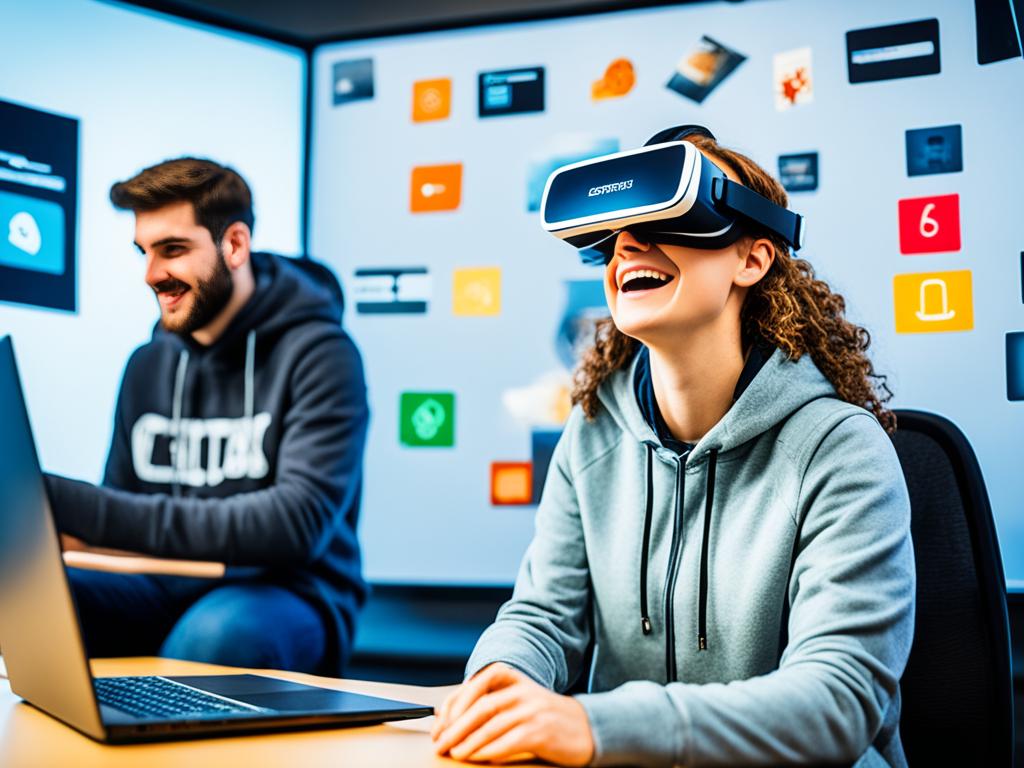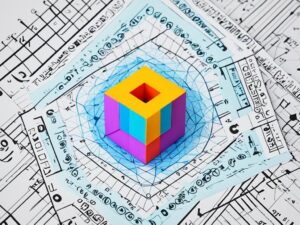
Remote Learning: Future Trends and Innovations in Online Learning
The way we learn is changing fast, thanks to remote learning. This shift is making learning easier and more accessible. We’ll look at the new trends and tech that are changing online education.
The COVID-19 pandemic made remote learning more popular. Now, more people want online classes and new learning tools. This change has broken down walls, making learning flexible and personal for everyone.

Looking ahead, remote learning is sparking new ideas in education. Technologies like AI and VR are making learning more engaging and personal. This is changing the way we teach and learn online.
Let’s dive into the exciting changes in remote learning. We’ll see what’s new and how it will help teachers and students in the digital world.
Redefining Education: The Rise of Remote Learning
Education has changed a lot in recent years. Remote learning is now a big part of it. This new way of learning has made it easier for students to learn from anywhere. It also brings flexible and personalized learning experiences.
Overcoming Geographical Barriers
It has changed how students get into education. Now, with online courses, students can learn from anywhere. This has made learning available to people from all over the world.
Flexible and Personalized Learning Experiences
It is flexible. Students can set their own learning times. This helps them balance school with other activities. Plus, online learning can be tailored to each student’s needs and how they like to learn.
This shift to remote learning has changed education a lot. It has removed old barriers and brought in new ways to learn. As technology gets better, remote learning will keep changing how we teach and learn.

Remote Learning: A Catalyst for Educational Innovation
The move to online learning has sparked a wave of innovation in education. Schools and universities are now exploring new ways to teach, use technology, and change the learning experience. This shift has made them look into new teaching methods and tools.
Remote learning has made it crucial to keep students engaged online. Teachers have had to change how they teach to make learning fun and effective at home. This has led to the creation of new platforms and tools for learning online, both in real-time and on their own.

Technology’s role in online learning has also sped up the use of new tech like AI and VR. These technologies are changing how students learn. They offer personalized lessons, learning paths that adjust to each student, and immersive experiences that were not possible in traditional classrooms.
Remote learning is pushing the education field to innovate, making teachers rethink how we learn. By using new technologies and teaching methods, schools and universities can offer learning that is flexible, easy to get to, and more engaging for everyone.
Enhancing Engagement through Virtual Classrooms
Virtual classrooms are changing the way we learn online. They make learning more engaging and help students connect with each other and their teachers. These online spaces offer a deeper and more interactive way to learn than traditional online courses.
Interactive Tools and Collaborative Platforms
Virtual classrooms have many tools that make learning fun and interactive. Students can use video chats, virtual whiteboards, and group spaces for projects. This lets them talk, work together, and learn by doing.
Students can also work on projects together and share their work. This helps them learn better and get ready for the job world. They learn to communicate, solve problems, and work as a team.

For virtual classrooms to work well, they need to make students feel connected online. By using tools that let everyone interact, teachers can make learning exciting. Students get to share their thoughts and learn from each other.
Leveraging Artificial Intelligence and Educational Technology
Remote learning is changing fast, thanks to artificial intelligence (AI) and new educational tech. These tools are making learning more personal and flexible for each student. They help teachers teach better and students learn more effectively.
Adaptive Learning and Personalized Instruction
AI helps make learning adapt to each student’s needs. It looks at how well a student is doing, what they like to learn, and what they’re missing. Then, it changes the lessons and materials to fit just right.
This way, students stay interested and learn at their own speed. It’s all about helping them use their strengths and work on their weaknesses.
Immersive Experiences with Virtual and Augmented Reality
Virtual reality (VR) and augmented reality (AR) are changing how we learn online. They make learning fun and real by letting students explore new worlds and interact with objects in 3D. This helps bridge the gap between the real and digital worlds.
By using artificial intelligence, educational technology, adaptive learning, personalized instruction, virtual reality, and augmented reality, online learning can be more personal, fun, and effective. It helps students of all ages and backgrounds learn better.

Remote Learning: Addressing Challenges and Opportunities
Remote learning is becoming more popular, but it comes with both challenges and chances. One big issue is making sure everyone can access online classes. Some students can’t join because they don’t have good internet or the right technology at home.
Also, some students struggle with using technology or need special help. We must find ways to overcome these online education barriers.
But, remote learning also has its perks. It lets students in far-off places get an education they might not have otherwise. It also lets students learn in a way that fits their own style best.
To make the most of it, we need to tackle the big challenges. This means making sure classes are well-designed, keeping students interested, and offering the right support. With new ideas and a focus on fairness, remote learning can make education better for everyone.
- Ensuring equal access to online education
- Overcoming barriers like limited internet connectivity and technological resources
- Addressing the need for digital literacy and accommodation for students with special needs
- Expanding educational access to remote or underserved areas
- Enabling personalized learning experiences
- Addressing instructional design, student engagement, and comprehensive support systems
Conclusion: Embracing the Future of Remote Learning
The future of education is changing fast, thanks to remote learning’s quick growth. This article has shown us the bright side of online education. It’s breaking down barriers and changing how we see learning.
Remote learning’s future is bright, with more access, tailored experiences, and new tech. This change lets learners everywhere reach their goals, no matter where they are. It’s making education more open and lively.
As we go forward, it’s key that teachers, schools, and leaders work together. They should make sure remote learning is easy, fun, and meets everyone’s needs. This way, we can make a future where remote learning, online education trends, and remote learning innovation come together. They will change how we learn, teach, and grow.
FAQ
What is remote learning?
Remote learning is when students get education through digital tools and platforms. They can learn from anywhere with internet. It’s also known as e-learning or distance education.
What are the benefits of remote learning?
It makes learning more accessible and flexible. Students can learn at their own pace. It also helps overcome the limits of location.
How does remote learning promote educational innovation?
The move to online learning has led to new teaching methods and tools. These changes are making learning more exciting and effective.
What role do virtual classrooms play in enhancing remote learning engagement?
Virtual classrooms use tools that make learning interactive. They help students and teachers connect better. This makes learning more engaging.
How are emerging technologies shaping the future of remote learning?
New tech like AI and VR is making learning more tailored to each student. It’s also creating new ways to experience education.
What are the challenges and opportunities associated with remote learning?
Remote learning has its hurdles, like unequal access and the need for better teaching methods. Yet, it opens doors to more learning chances and new ways to teach.



Remote learning is very essential in this technology era as it faster learn processes.
Thanks for emphasizing the need for digital literacy training for educators. It’s essential for effective remote teaching